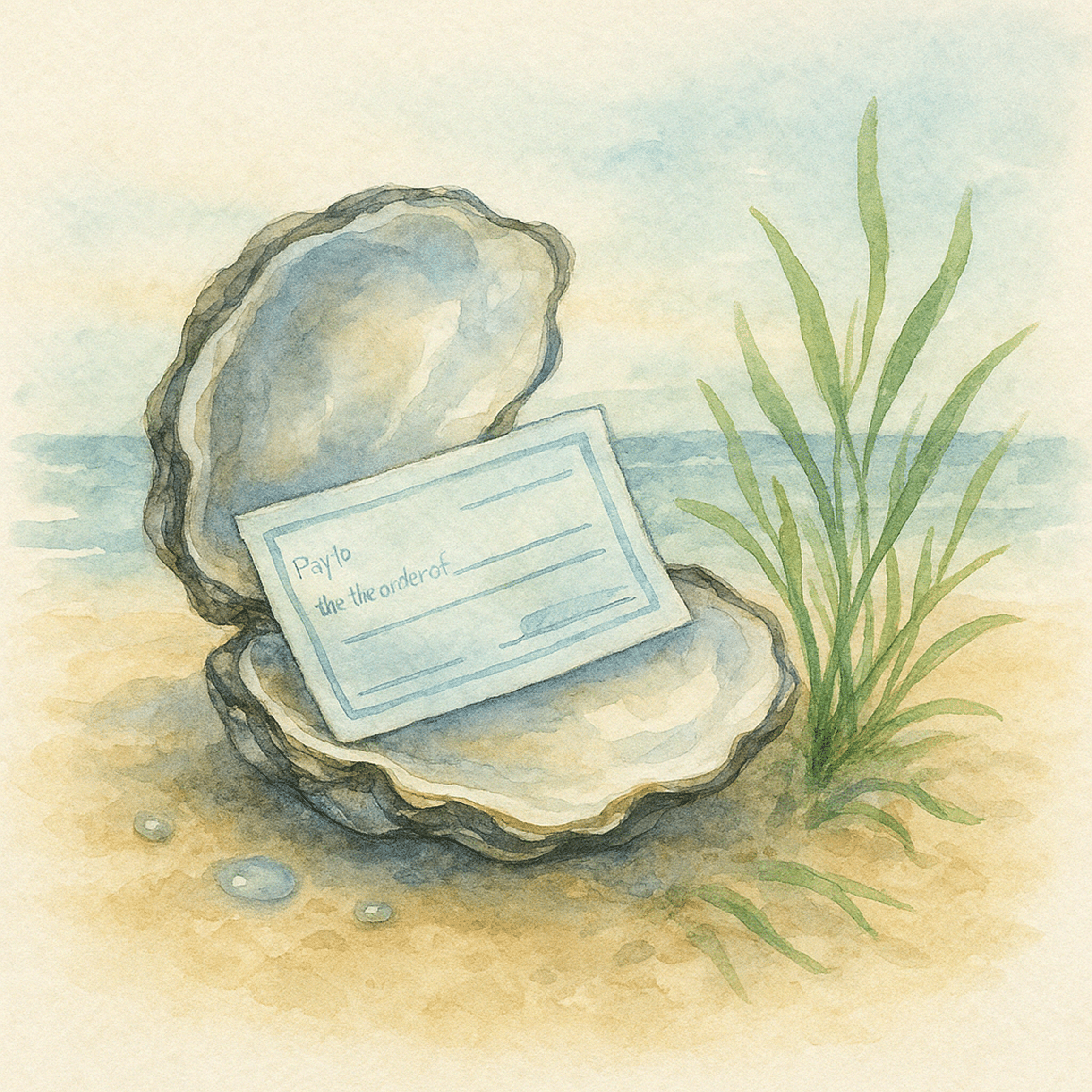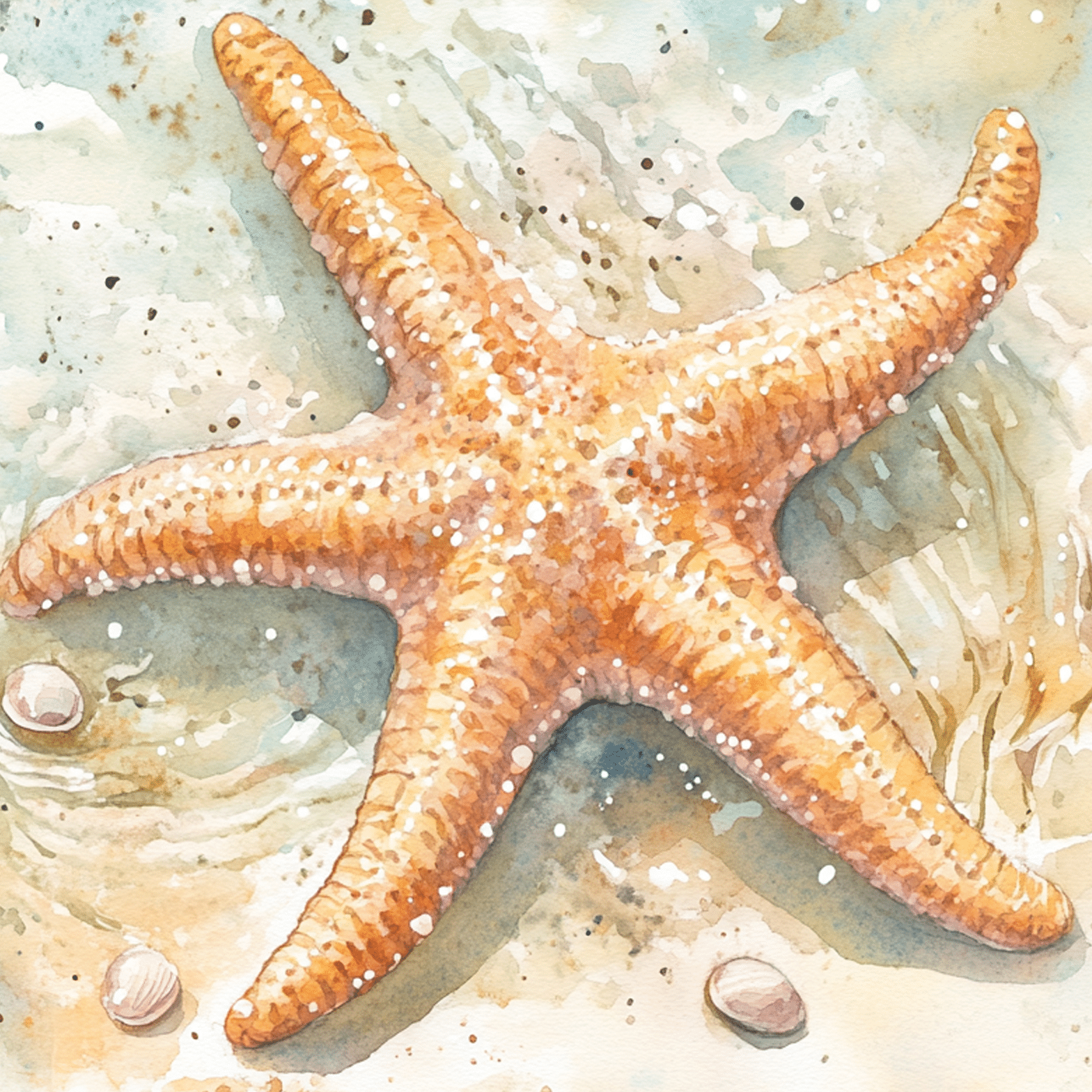Sponsor a seawall that purifies and protects
Living seawalls are changing how we think about coastal infrastructure.
Instead of flat concrete barriers that simply hold back water, these nature-inspired designs support marine life that actively improves it—filtering pollution, restoring marine habitats, and helping cities adapt to sea level rise.
Now, a bold new chapter is being written in Fort Lauderdale.
The Living Seawall at The Church by the Sea is the first fully integrated vertical reef seawall in the world.
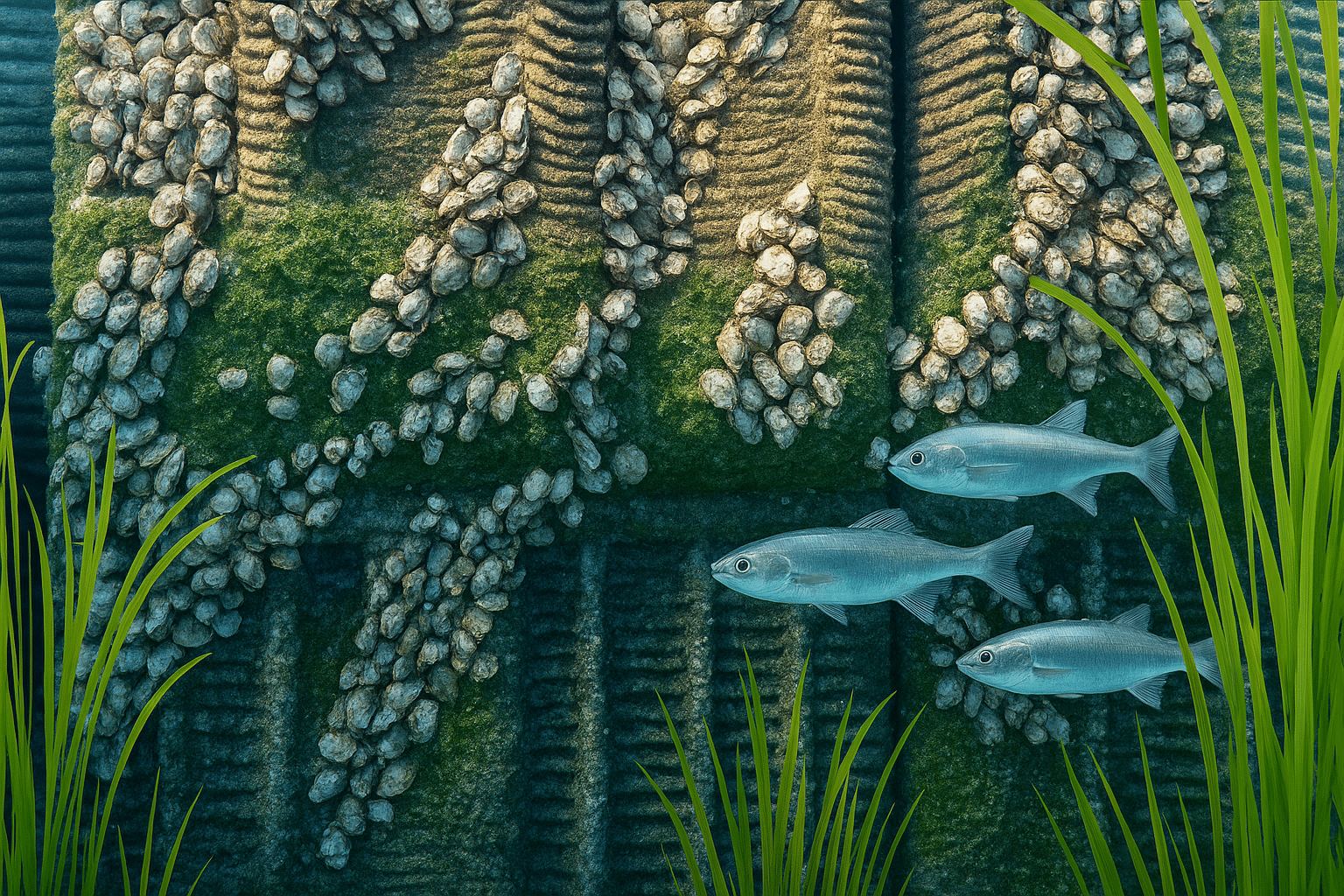
Unlike earlier designs—where ecological features are added onto flat or steel-backed walls—this seawall prints mangrove-like textures directly into its 3D-printed concrete panels. The result is a seamless, steel-free structure that filters water, supports marine biodiversity, and sets a new standard for resilient design.
Stretching 860 feet along the Marion River canal, this project will help restore water quality and marine life in one of Fort Lauderdale’s most developed—and vulnerable—urban waterways.
Nature-inspired. Purpose-driven.
Conventional seawalls are flat, sterile, and ecologically inert.
Living seawalls are a step forward—adding texture and habitat features to help marine life return.
But this one goes even further.
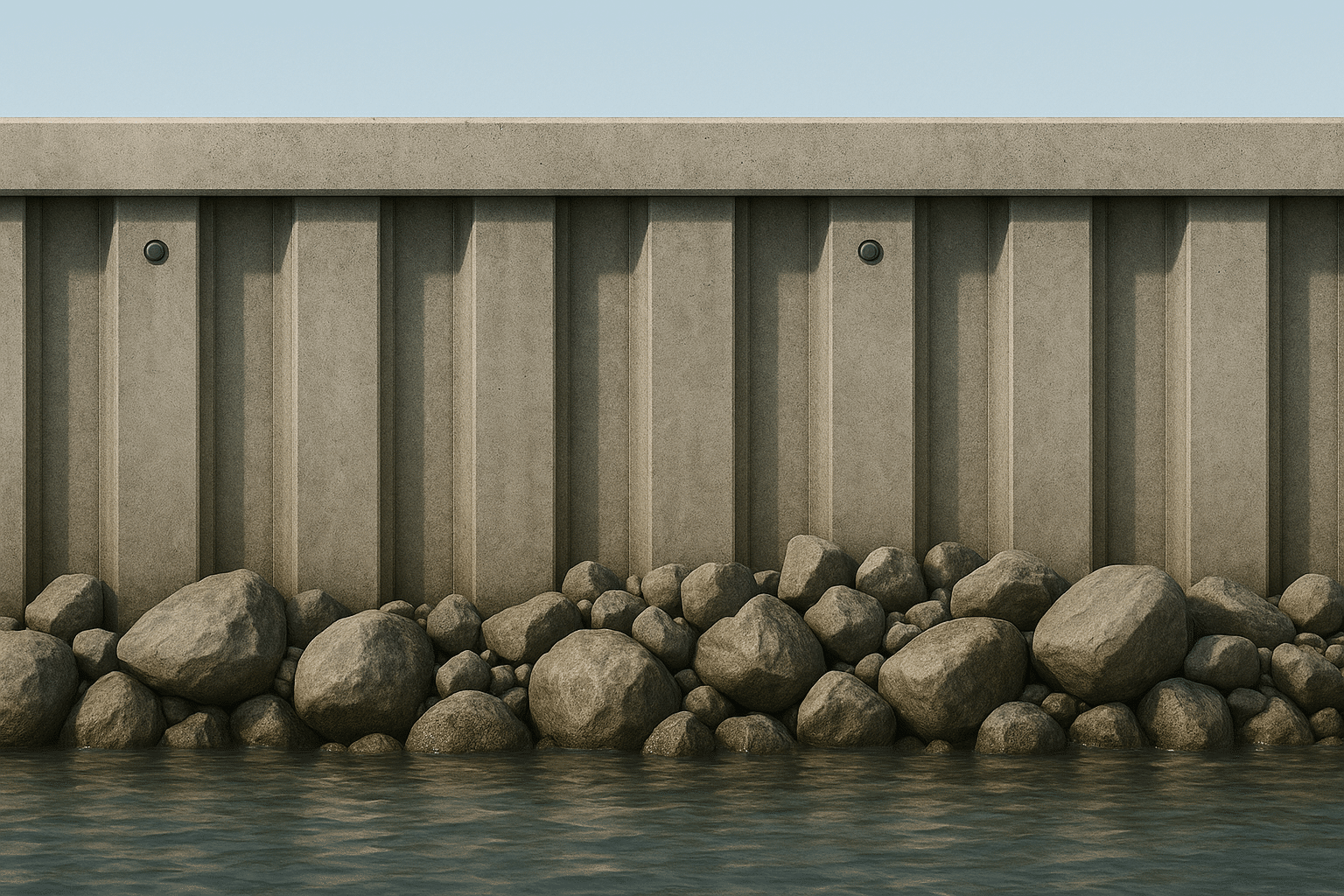
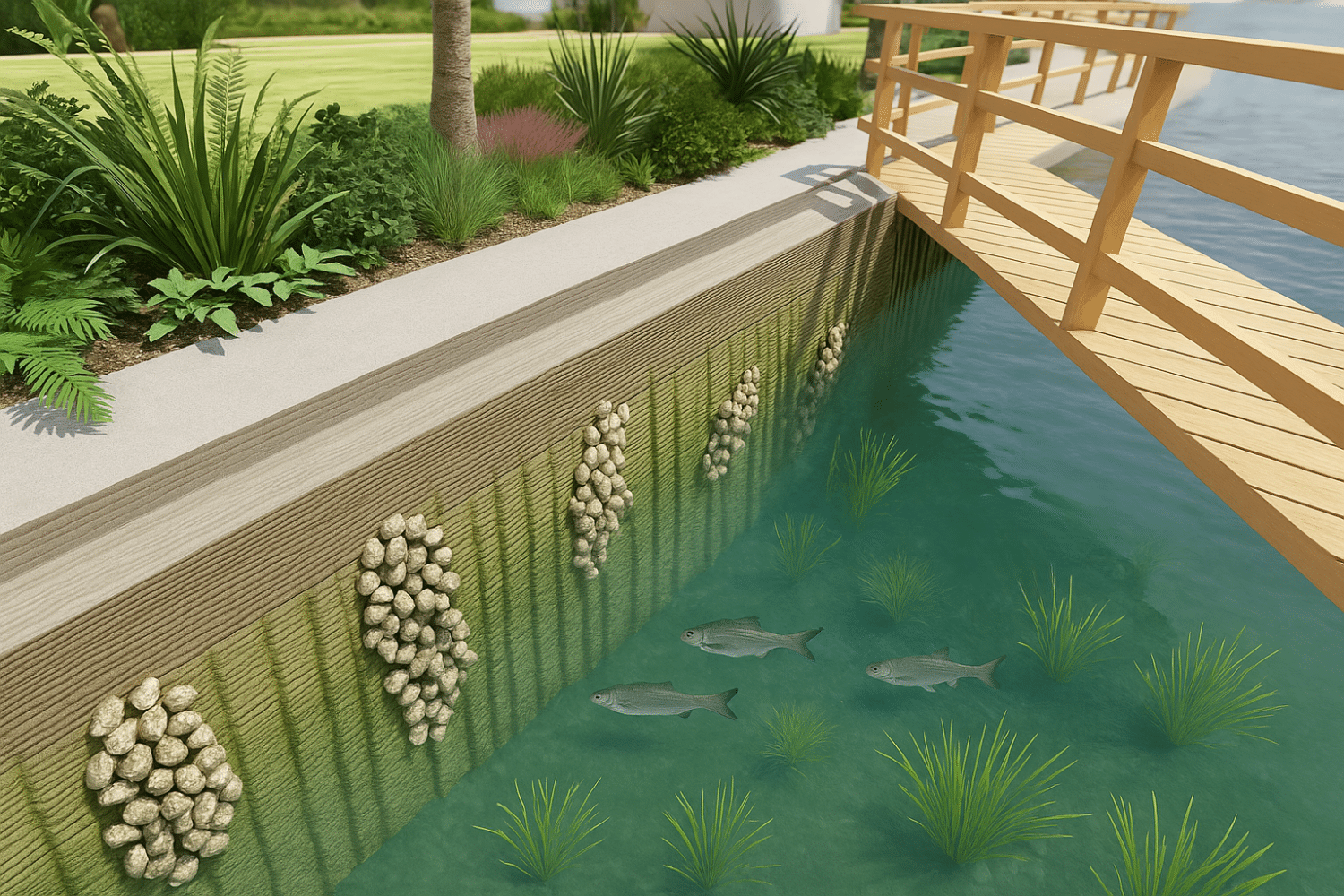
It’s the first in the world to fully integrate those features into its structure—printing mangrove-inspired textures directly into the 3D-printed concrete panels, rather than adding them after construction.
The result is a seamless, steel-free vertical reef that protects property, restores habitat, and inspires a new standard of coastal stewardship.
Project impact by the numbers

Oysters
will naturally colonize the structure and we expect 700,000 to live and flourish – each oyster will filter 50 gallons of water per day.
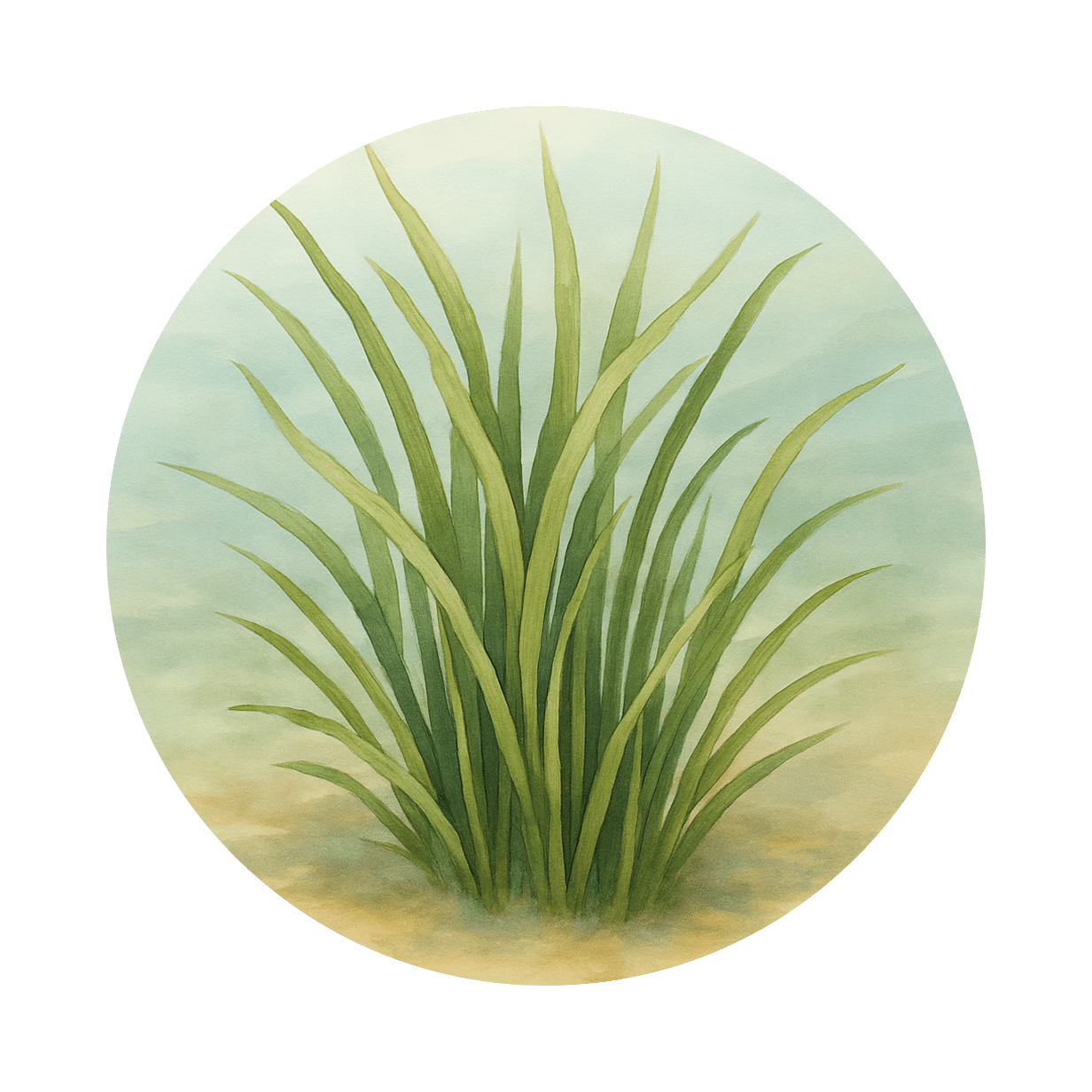
Seagrasses
will return as clarity improves, buffering wave energy and storing blue carbon.
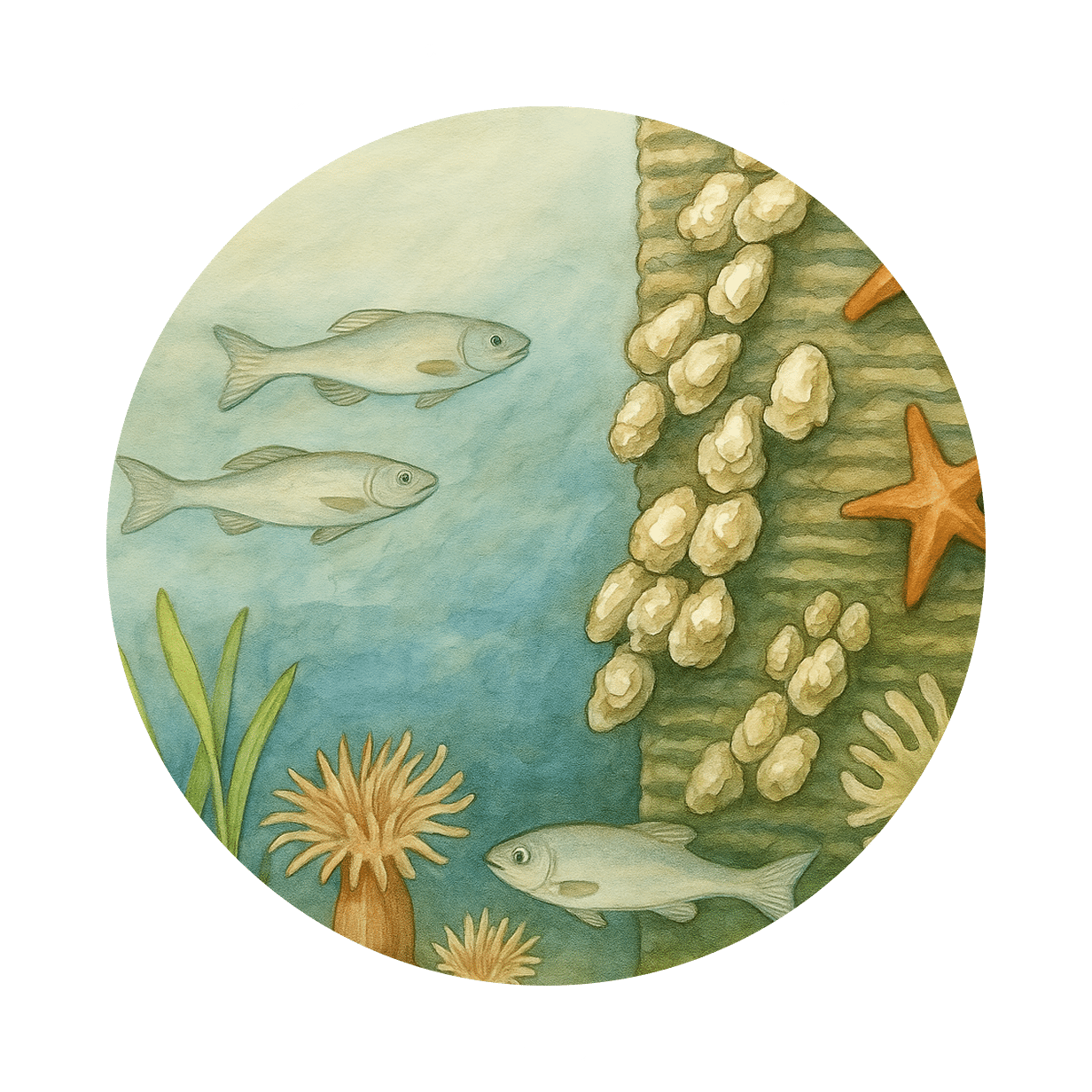
Marine biodiversity
will increase as sea stars, fish, and anemones find refuge in the wall’s textured surfaces
A platform for learning and discovery
The project also serves as a public and academic resource. A planned Discovery Deck will allow visitors to observe the reef in action. Floating research platforms and a riparian zone will support ongoing studies in marine science, climate resilience, and environmental design.
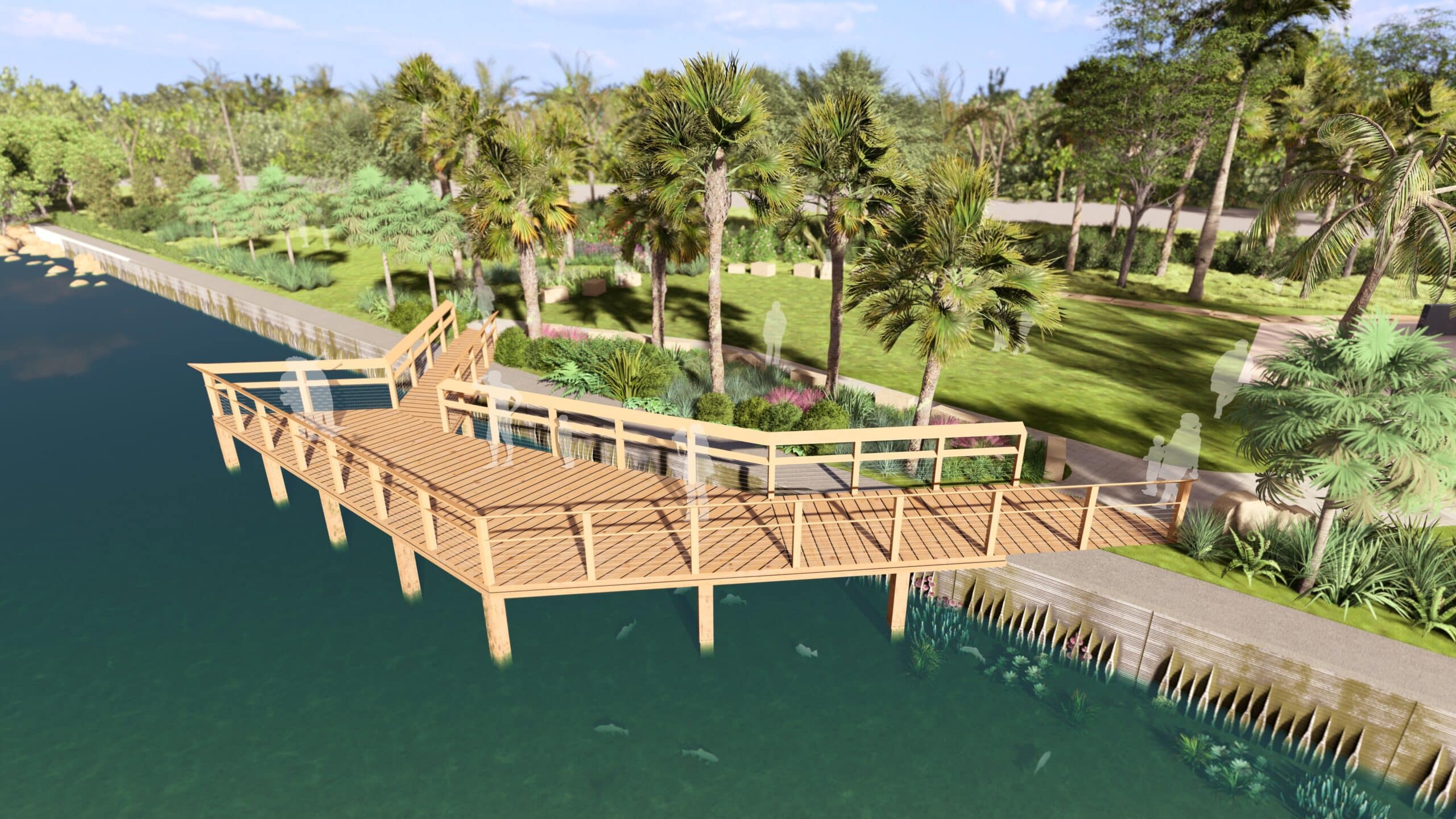
Project timeline

Permitting & Prep

Construction Begins
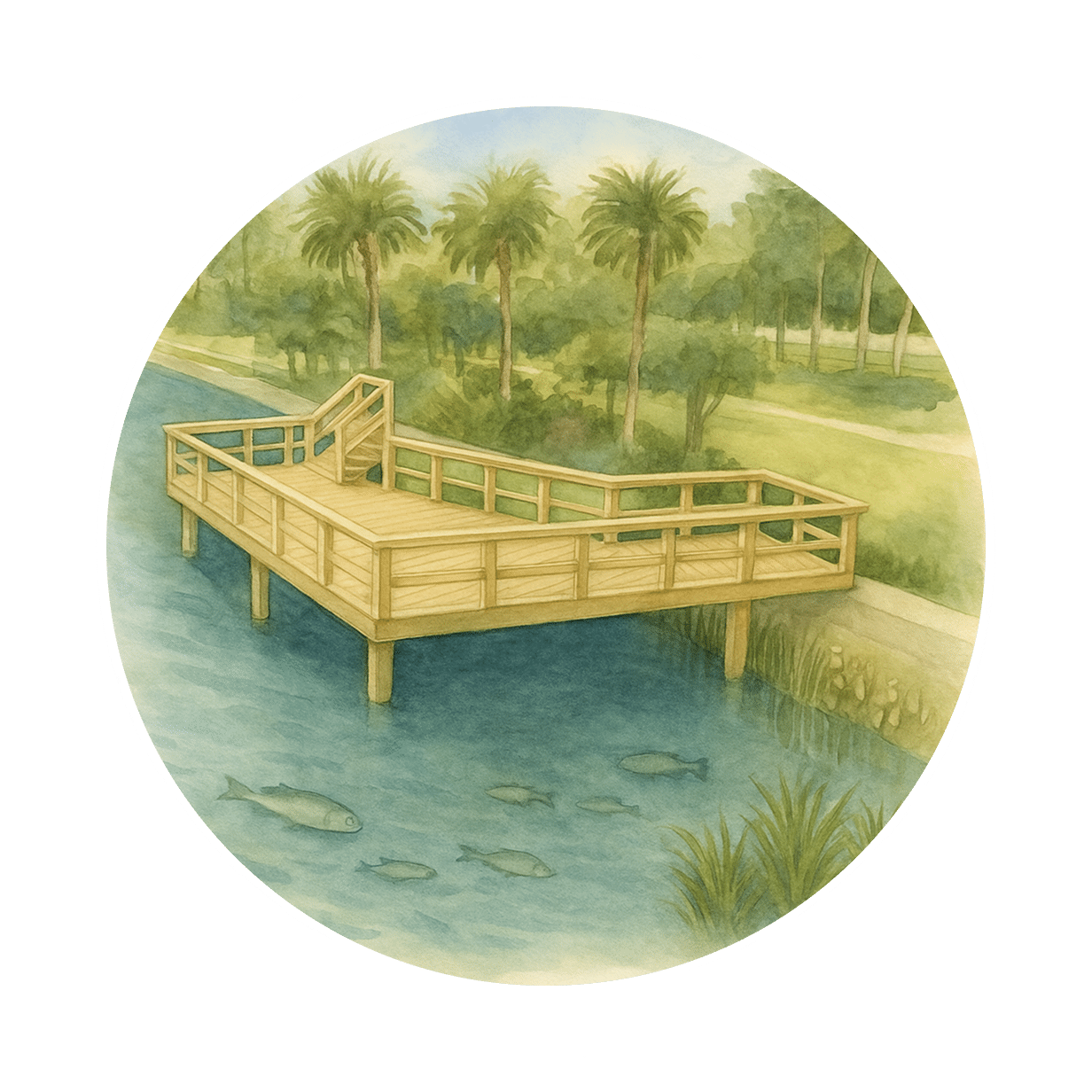
Discovery Deck Opens to the Public

